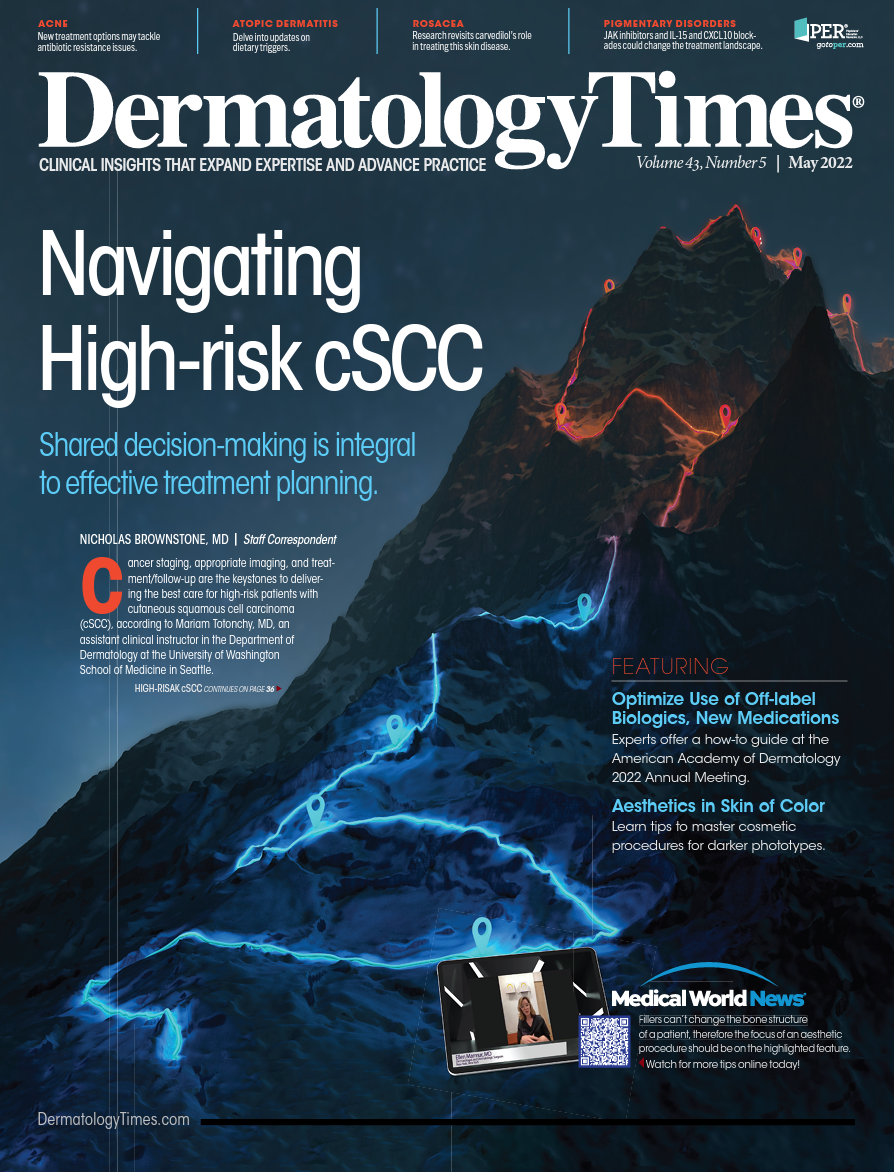- Acne
- Actinic Keratosis
- Aesthetics
- Alopecia
- Atopic Dermatitis
- Buy-and-Bill
- COVID-19
- Case-Based Roundtable
- Chronic Hand Eczema
- Drug Watch
- Eczema
- General Dermatology
- Hidradenitis Suppurativa
- Melasma
- NP and PA
- Pediatric Dermatology
- Pigmentary Disorders
- Practice Management
- Precision Medicine and Biologics
- Prurigo Nodularis
- Psoriasis
- Psoriatic Arthritis
- Rare Disease
- Rosacea
- Skin Cancer
- Vitiligo
- Wound Care
Publication
Article
Dermatology Times
Diet and Allergic Contact Dermatitis
Author(s):
Medications, plants, and more may play a significant role in systemic contact dermatitis.
Systemic contact dermatitis (SCD) occurs when patients become sensitized to an allergen through various types of exposure: oral (via inhalation), transcutaneous, or intravenous. The result can be a type 4 hypersensitivity reaction, said Peggy A. Wu, MD, MPH, a dermatologist, and associate professor of clinical dermatology with the UC Davis Health Department of Dermatology in Sacramento, California.
A type 4 hypersensitivity reaction is characterized as a delayed cell-mediated reaction that occurs in response to contact with certain allergens, according to a continuing education activity through StatPearls.1
Wu discussed the main causes of these cell-mediated immune reactions, including dietary connections, during her presentation at the 2022 American Academy of Dermatology Annual Meeting, held March 25 to 29 in Boston, Massachusetts.2 The top offenders encompass a wide range of substances, she said: medications, plants, metals, fragrances (notably, balsam of Peru), and food preservatives (benzoic acid, benzoate, gallates, sorbic acid) and additives (propylene glycol, aspartame, formaldehyde).
Among the top 10 allergens reported from 2017 to 2018, according to Wu, 4 linked back to preservatives: methylisothiazolinone, methyl- chloroisothiazolinone, formaldehyde, and benzisothiazolinone. The other allergens included 3 fragrances (fragrance mix I, hydroperoxides of linalool, and Myroxylon pereirae resin/balsam of Peru), 2 metals (nickel sulfate hexahydrate and cobalt), and 1 hair dye (4-phenylenediamine).
Nickel SCD, Wu explained, can clinically present on the palms and soles as a vesicular rash and pompholyx and also manifest on the bilateral extensor elbows. Irritants may be found in many places including metals, which can be found in foods. For example, chromium can be found in potatoes, meats, tea, nuts, and grapes, as well as nutritional supplements (eg, multivitamins) and food dyes. Cobalt can be found in flaxseeds, chick- peas, chocolate, and nuts and is a component of vitamin B12.
Balsam of Peru, derived from the resin of the topical tree M balsamum var pereirae in Central and South America, is a marker of fragrance allergy, she said. The clinical presentation includes perioral, genital, perianal, symmetrical intertriginous, and vesicular hand atopic dermatitis (AD). Benzoic acid or benzoate, a component of balsam of Peru, is an antimicrobial preservative found in personal care products, food and drinks.
SCD reactions are more common in people 60 years and older, according to Wu. Additionally, patients with AD are reported to be more allergic to benzoic acid compared with the general population. Benzoic acid is the forty second most common allergen in patients with AD vs seventy ninth for the general population, she said. An allergy to gallates, which are antioxidants, has a perioral or cheilitis clinical presentation.
Wu highlighted talking points for patients experiencing SCD, explaining that a physician should advise avoiding topical contact with allergens. If after 2 months there is no significant improvement, an elimination diet can help deter- mine if any foods are causing a reaction. Dietary avoidance should be continued for at least 1 month to evaluate skin response.
In her conclusion, Wu offered additional general suggestions. “If a rash does not improve with topical avoidance, there may be a significant component of systemic contact dermatitis. Start with a 1-month trial,” she suggested. “There are a number of tools, papers, and websites to guide you and your patients through. Be aware of other common allergens—latex, poison ivy/oak/sumac—and associated foods.”
References
1. Marwa K, Kondamudi NP. Type iv hypersensitivity reaction. In: StatPearls. Stat- Pearls Publishing; 2022.
2. Shi V, Armstrong AW, Friedman AJ, et al. Dietary triggers and modifications of common dermatologic conditions—an evidence-based approach. Presented at: 2022 American Academy Dermatology Association Annual Meeting; March 25-29, 2022; Boston, MA.



























